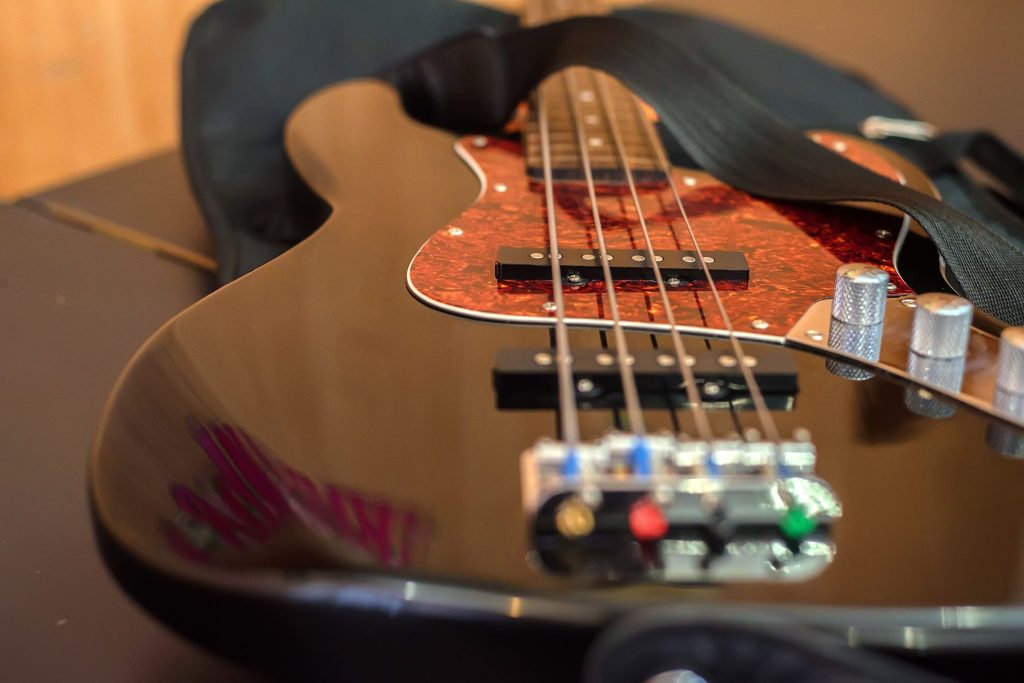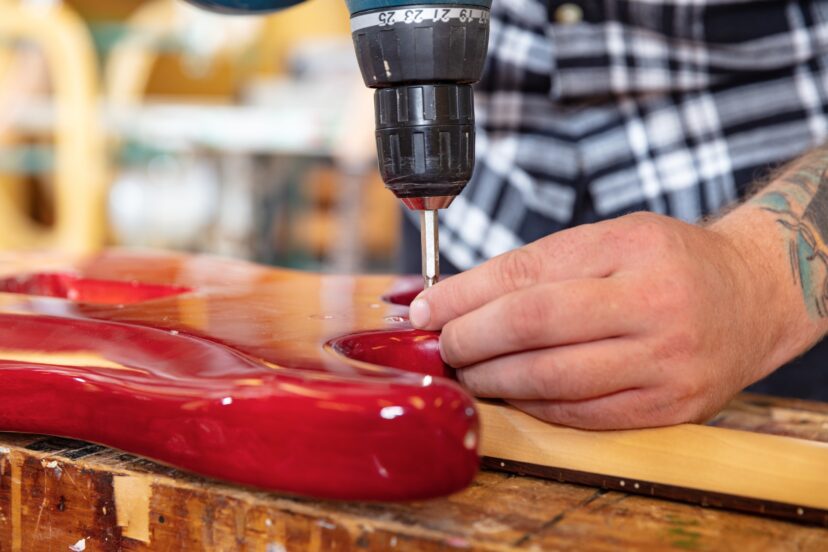Bass Guitar Body: The Heart of the Sound
The body of your instrument is more than just a piece of wood that holds the strings. The wood vibrating against your body during a gig is a very cool feeling. The bass guitar body plays a critical role in how your instrument sounds, feels, and even looks. So, whether you’re just starting out or you’ve been slapping those strings for a while, understanding the different bass guitar bodies will help you find the perfect match for your playing style and sound.
Introduction to Bass Guitar Body
The bass guitar body is often overlooked when it comes to choosing an instrument. Many focus on the neck or the pickups, but the body is essential to both tone and comfort. From the material used to the shape and weight, every aspect of the bass guitar body impacts your overall experience. So, let’s dive into what makes a bass guitar body so important.
Why the Bass Guitar Body is Important
You might ask, “Why is the body so important?” Well, think of the bass guitar body as the foundation. Just like how the foundation of a building determines its strength, the body of your bass influences its tone, resonance, and even playability. It where everything comes together.
The Role of the Body in Sound Production
The wood used in the body, known as tonewood, helps shape the sound of your bass. Each type of wood has a different density and resonance, which creates a unique tone. The body also impacts sustain—how long a note rings out—and how much punch and warmth your sound will have.
Aesthetic Appeal of the Bass Guitar Body
Let’s not forget looks. The body shape and finish of your bass guitar are part of its personality. It’s not just about functionality—choosing a bass that reflects your style can make playing more enjoyable. Whether you like the sleek curves of a modern design or the vintage vibes of a classic model, the body defines the guitar’s visual appeal.
Types of Bass Guitar Bodies
There are three main types of bass guitar bodies: solid, hollow, and semi-hollow. Each type brings something different to the table, both in terms of sound and feel. Let’s break them down so you can get a clearer picture.
Solid Body Bass Guitars
Solid body bass guitars are the most common type you’ll come across. They’re made from a single, solid piece of wood, and they’re known for their durability and consistent sound. But there’s more to it than just being sturdy.
Characteristics of Solid Body Bass Guitars
These basses offer excellent sustain and are resistant to feedback, making them great for high-volume situations. They’re versatile and can be used in nearly any genre, from rock and metal to funk and jazz.
Popular Solid Body Models
Some famous examples of solid body basses include the Fender Precision Bass and the Music Man StingRay. Both are renowned for their powerful sound and reliability on stage.
Hollow Body Bass Guitars
Hollow body bass guitars, as the name suggests, have a hollow chamber inside the body. These are less common but have a distinct sound that many players love.
Unique Sound Properties
Hollow body basses tend to have a warmer, more resonant tone. They offer a natural, acoustic-like quality that’s hard to get from solid body basses. The downside? They can be prone to feedback at higher volumes, which makes them better suited for jazz or more intimate performances.
Ideal Playing Styles for Hollow Body Guitars
These basses are perfect for players who want a softer, rounder tone. They’re a favorite among jazz and blues musicians for their ability to create smooth, mellow sounds.
Semi-Hollow Body Bass Guitars
If you’re looking for a blend of both worlds, the semi-hollow body bass might be your best bet. These basses combine the resonance of hollow bodies with the sustain and reduced feedback of solid body designs.
Combining Best of Both Worlds
Semi-hollow basses give you that warm, acoustic-like resonance without as much risk of feedback. They’re a great option if you play a mix of styles or need a bass that’s flexible enough for different situations.
Pros and Cons of Semi-Hollow Bass Guitars
While they offer a balanced tone, semi-hollow basses can still be prone to feedback under extreme conditions. However, if you’re careful with your amp settings, they can provide a unique sound that’s hard to match.
Bass Guitar Body Materials
The type of wood used in a bass guitar body, or tonewood, plays a big part in its overall sound. Some woods create a bright tone, while others offer a deeper, more resonant sound.
Tonewoods: Why They Matter
Tonewoods are the various types of wood used in the construction of a guitar body. Different woods resonate differently, affecting the overall tone. For bass guitars, choosing the right tonewood is key to shaping your sound.
Alder, Ash, and Basswood
Alder and ash are two of the most common woods used in bass guitar bodies. Alder is known for its balanced tone, while ash provides a brighter, snappier sound. Basswood is another popular option for its lightweight and soft tone, making it a great choice for beginners or those who want something easy to handle.
Exotic Wood Options
For those who want something a bit more unique, exotic woods like koa, mahogany, and walnut can offer distinct tones and aesthetics. These woods often provide a warmer sound and are favored by more experienced players looking for a specific tonal quality.
How Body Weight Affects Playability
The weight of your bass guitar body is another factor to consider. Heavier basses often provide more sustain and a thicker tone, but they can be tiring to play for long periods. On the other hand, lighter basses are more comfortable but may lack some of that sonic depth. It’s all about finding the right balance for your needs.

Choosing the Right Bass Guitar Body for Your Style
Your playing style will heavily influence the type of bass guitar body that works best for you. Whether you prioritize comfort, sound, or aesthetics, there’s a body type that fits your needs.
Comfort vs. Sound: Balancing Priorities
If you’re a player who gigs frequently or spends long hours in the studio, comfort is key. Look for a body that sits well against your body and doesn’t strain your shoulders. However, don’t compromise too much on sound, as it’s equally important to find a bass that sounds great for your genre.
Considering Body Shape and Design
Bass guitar bodies come in various shapes, from the traditional “P” shape to more modern, sleek designs. While shape may seem like a purely aesthetic choice, it also affects how the bass feels when you play it. Larger bodies can be harder to manage for smaller players, while more compact designs offer better mobility.
Ergonomics and Comfort for Long Sessions
Playing bass for long sessions requires a body that’s designed for comfort. Contoured bodies, such as the ones found on some Fender and Ibanez models, help reduce fatigue by providing a more ergonomic fit. This can be especially important for live performances or extended practice sessions.
Customization and Modifications
One of the best parts about owning a bass guitar is the ability to customize it to fit your personal taste and playing needs. Whether you’re upgrading the pickups or changing the finish, making your bass truly yours can take it to the next level.
Upgrading Pickups and Electronics
One of the most common upgrades for bass guitar bodies is swapping out the pickups. Higher-quality pickups can dramatically change your tone, giving you more clarity, punch, or warmth, depending on what you’re after.
Custom Finishes: Make It Your Own
Another great way to personalize your bass is by customizing the finish. Whether you want a sleek matte black or a flashy burst of colors, the finish can make your bass stand out on stage and reflect your personal style.
Conclusion: Finding Your Perfect Bass Guitar Body
Choosing the right bass guitar body is a deeply personal decision. It’s not just about the technical specs; it’s about finding a bass that feels right in your hands and resonates with your musical identity. Whether you go for a solid, hollow, or semi-hollow body, make sure it’s something you’ll love playing every day.
FAQs
Q1: What’s the best material for a bass guitar body?
The best material depends on your sound preferences. Alder is balanced, ash is bright, and basswood is lightweight and mellow.
Q2: Are hollow body bass guitars good for beginners?
They’re great for certain styles but may not be ideal for beginners due to potential feedback issues at higher volumes.
Q3: Can I change the body of my bass guitar?
Yes, you can swap out bodies, but it’s a big modification that may affect your bass’s tone and feel.
Q4: How does body shape affect playability?
Smaller bodies are easier to manage, while larger ones may provide more resonance but can be bulky.
Q5: Do exotic woods make a big difference in sound?
Exotic woods can offer unique tonal qualities, but they often come with a higher price tag.




